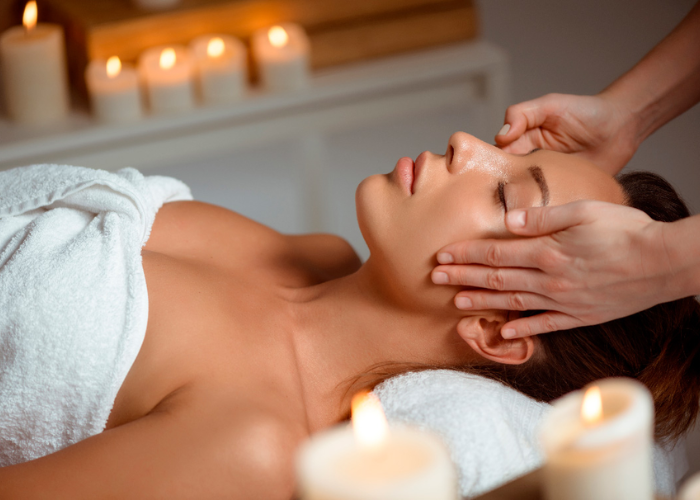Relaxing massages have become increasingly popular in recent years as people seek ways to alleviate stress, promote relaxation, and improve overall well-being. The power of touch combined with the therapeutic techniques used in these massages can provide a multitude of benefits for both the body and mind. In this article, we will explore the various types of relaxing massages, how to choose the right massage for you, what to expect during a session, tips for maximizing their benefits, and the importance of finding a qualified massage therapist. Additionally, we will delve into DIY techniques for self-relaxation at home and popular spa destinations for indulging in the ultimate relaxation experience. By the end of this article, you will have all the information you need to incorporate relaxing massages into your self-care routine and reap their many rewards.
The Benefits of Relaxing Massages
Relaxing massages offer a wide range of benefits that can positively impact both your physical and mental well-being. One of the primary benefits is stress reduction. Our modern lifestyles often leave us feeling overwhelmed and stressed, and this can have a detrimental effect on our health. Relaxing massages help to release tension and promote relaxation, allowing you to unwind and recharge.
Another key benefit of relaxing massages is pain relief. Whether you’re suffering from chronic pain, muscle soreness, or tension headaches, a skilled massage therapist can target specific areas and apply techniques that alleviate discomfort. The manipulation of soft tissues during a massage helps to increase blood flow, release endorphins, and relax tight muscles, all of which contribute to pain reduction.
In addition to stress reduction and pain relief, relaxing massages can also improve sleep quality. Many people struggle with insomnia or have difficulty falling asleep due to a restless mind. Massage therapy helps to relax the body and mind, promoting a sense of calmness that can aid in achieving a restful night’s sleep. Furthermore, massages have been shown to boost the immune system, improve circulation, and enhance overall flexibility and range of motion.
Different Types of Relaxing Massages
There are various types of relaxing massages, each with its own unique techniques and benefits. Let’s explore some of the most popular ones:
Swedish Massage: This is one of the most common types of massages, characterized by long, flowing strokes, kneading, and circular movements. Swedish massages are gentle and soothing, making them ideal for relaxation and stress relief. The therapist may use oil or lotion to minimize friction on the skin, allowing for smoother movements.
Hot Stone Massage: In a hot stone massage, heated stones are placed on specific points of the body to promote deep relaxation. The stones are usually made of basalt, a type of volcanic rock that retains heat. The combination of heat and massage techniques helps to release tension, improve blood circulation, and relieve muscle stiffness.
Aromatherapy Massage: Aromatherapy massages incorporate the use of essential oils to enhance the massage experience. Different oils have varying therapeutic properties, such as lavender for relaxation or eucalyptus for invigoration. The scent of the oils, combined with the massage techniques, creates a deeply soothing and rejuvenating experience.
Thai Massage: Thai massages are performed on a mat on the floor, with the recipient fully clothed. This type of massage combines acupressure, stretching, and gentle rocking motions to relieve tension and improve energy flow. Thai massages are known for their invigorating and energizing effects.
Deep Tissue Massage: Deep tissue massages target the deeper layers of muscles and connective tissues. This type of massage is often recommended for individuals with chronic pain, muscle injuries, or limited mobility. The therapist applies firm pressure and uses slower strokes to reach the underlying tissues and release tension.
How to Choose the Right Massage for You
Choosing the right massage for your needs and preferences is essential to ensure you get the most out of your session. Here are a few factors to consider when making your decision:
Goal: Determine your main goal for getting a massage. Are you looking to relax and reduce stress, relieve pain, or address a specific issue like muscle tightness or headaches? Understanding your goal will help you choose a massage that aligns with your needs.
Techniques: Research the different massage techniques available and their respective benefits. Consider which techniques resonate with you and which ones you believe will be most effective in achieving your desired outcome.
Pressure: Think about your preference for pressure during a massage. Some people enjoy a gentle touch, while others prefer deeper pressure to release tension. Communicate your preferences with the massage therapist to ensure they can tailor the session to your needs.
Comfort Level: Consider if you have any specific requirements or preferences in terms of the massage environment. Some people may prefer a quiet, dimly lit room, while others enjoy soft music or aromatherapy scents. It’s important to feel comfortable and relaxed during your session.
By taking these factors into account, you can choose a massage that aligns with your goals and preferences, setting the stage for a truly rejuvenating experience.
What to Expect During a Relaxing Massage Session
If you’re new to massage therapy or trying a new type of massage, you may be wondering what to expect during a session. Here’s a general overview of what typically occurs:
Intake and Consultation: Before your massage, the therapist will conduct an intake and consultation to gather information about your health history, any specific concerns, and your goals for the session. This information helps them customize the massage to meet your needs and ensure your safety.
Preparation: Once the consultation is complete, the therapist will instruct you on how to prepare for the massage. They may ask you to undress to your comfort level and lie on a massage table or mat. They will then leave the room to allow you privacy while you prepare.
During the Massage: The therapist will return to the room and begin the massage, using the chosen techniques and adjusting the pressure based on your preferences. They may use oil, lotion, or other products to facilitate smooth movements and reduce friction on the skin. Throughout the session, the therapist will check in with you to ensure your comfort and address any concerns.
Post-Massage: Once the massage is complete, the therapist will leave the room to allow you time to dress. They may provide recommendations for self-care after the session, such as stretching exercises or drinking plenty of water to flush out toxins. Take your time getting up from the table and allow yourself a few moments to fully reorient before leaving the room.
It’s important to communicate openly with your massage therapist throughout the session. If anything feels uncomfortable or if you have any questions or concerns, don’t hesitate to speak up. Remember, the message is about your well-being, and the therapist is there to ensure you have a positive experience.
Tips for Maximizing the Benefits of a Relaxing Massage
To make the most of your relaxing massage experience, here are some tips to consider:
Hydrate: Drink plenty of water before and after your massage to stay hydrated. This helps the body flush out toxins and promotes overall well-being.
Stretch: Incorporate gentle stretching exercises into your routine before and after a massage. Stretching helps to further release tension and improve flexibility, complementing the effects of the massage.
Take It Easy: After a massage, allow yourself time to rest and relax. Avoid engaging in intense physical activity or stressful situations immediately after the session. Give your body and mind time to fully absorb the benefits of the massage.
Maintain Regular Sessions: Consistency is key when it comes to reaping the long-term benefits of relaxing massages. Consider incorporating regular massage sessions into your self-care routine, whether it’s weekly, bi-weekly, or monthly, depending on your needs and availability.
Combine with Other Self-Care Practices: Pair your relaxing massages with other self-care practices to enhance their effects. For example, practicing mindfulness or meditation, taking warm baths, or engaging in hobbies that bring you joy can all contribute to your overall well-being.
By following these tips, you can maximize the benefits of your relaxing massages and make them an integral part of your self-care routine.
The Importance of Finding a Qualified Massage Therapist
When it comes to receiving a relaxing massage, finding a qualified and skilled massage therapist is crucial. Here’s why:
Safety: A qualified massage therapist has undergone proper training and understands the human anatomy, contraindications, and precautions. They will prioritize your safety and well-being throughout the session.
Expertise: A skilled massage therapist possesses a deep understanding of various massage techniques and can tailor their approach to address your specific needs. They can effectively target areas of tension, provide appropriate pressure, and create a truly relaxing experience.
Ethics and Professionalism: Qualified massage therapists adhere to strict ethical guidelines and maintain a professional demeanor. They respect your privacy, maintain confidentiality, and create a comfortable and respectful environment.
To find a qualified massage therapist, consider asking for recommendations from friends, family, or healthcare professionals. You can also research local spas and massage therapy practices, ensuring they are licensed and have positive reviews from previous clients. Don’t be afraid to ask questions and communicate your needs and concerns to the therapist before booking a session.
DIY Techniques for Self-Relaxation at Home
While professional massages offer a unique and expert touch, you can also incorporate self-relaxation techniques into your routine at home. Here are some DIY techniques to try:
Self-Massage: Use your hands or a massage tool to apply gentle pressure to areas of tension. Experiment with different strokes, such as circular motions or kneading, to release tight muscles.
Hot or Cold Therapy: Apply a warm compress or use an ice pack on areas of discomfort to promote relaxation and reduce inflammation. Alternating between hot and cold therapy can also be beneficial.
Breathing Exercises: Practice deep breathing exercises to calm your mind and relax your body. Focus on slow, deep breaths, inhaling through your nose and exhaling through your mouth.
Stretching: Incorporate stretching exercises into your daily routine to release tension and improve flexibility. Pay attention to areas that tend to hold tension, such as the neck, shoulders, and lower back.
Aromatherapy: Use essential oils in a diffuser or apply them topically to create a relaxing atmosphere at home. Lavender, chamomile, and ylang-ylang are known for their calming properties.
While these DIY techniques may not replace the experience of a professional massage, they can be effective in promoting relaxation, reducing stress, and addressing minor muscle tension.
Popular Spa Destinations for Relaxing Massages
If you’re looking to indulge in the ultimate relaxation experience, there are several popular spa destinations around the world that are renowned for their relaxing massages. Here are a few worth considering:
Bali, Indonesia: Known for its serene landscapes and ancient healing traditions, Bali offers a plethora of luxury spas and wellness retreats. Balinese massages, with their gentle stretches and acupressure techniques, are particularly popular.
Tulum, Mexico: Tulum is a beachside paradise that attracts wellness enthusiasts from around the world. The tranquil setting and abundance of holistic retreats and spa resorts make it an ideal destination for those seeking relaxation and rejuvenation.
Kyoto, Japan: With its rich cultural heritage and traditional healing practices, Kyoto offers a unique spa experience. Japanese massages, such as shiatsu, focus on acupressure and energy flow, providing a deeply therapeutic and calming effect.
Rishikesh, India: Nestled in the foothills of the Himalayas, Rishikesh is renowned as the yoga capital of the world. The city is home to numerous ashrams and wellness centers that offer a wide range of massages and holistic treatments.
Sedona, Arizona: Known for its stunning red rock formations and spiritual energy, Sedona is a popular destination for those seeking relaxation and healing. The area is dotted with luxurious spas and wellness resorts that offer various types of massages and wellness treatments.
These are just a few examples of the many spa destinations available worldwide. Whether you choose to travel to one of these locations or explore spas closer to home, immersing yourself in a serene and tranquil environment can enhance the benefits of your relaxing massage.
Conclusion
Relaxing massages offer an array of benefits for both the body and mind, making them a valuable addition to your self-care routine. Whether you choose to visit a professional massage therapist or explore DIY techniques at home, taking time to relax and unwind is essential for overall well-being.
By understanding the different types of massages, choosing the right one for your needs, and finding a qualified massage therapist, you can ensure a truly rejuvenating experience. Remember to maximize the benefits of your massages by staying hydrated, stretching, and maintaining regular sessions.
Consider combining massages with other self-care practices and exploring popular spa destinations to make the most of your relaxation journey. By prioritizing self-care and incorporating relaxing massages into your routine, you can embrace a healthier, more balanced lifestyle.




